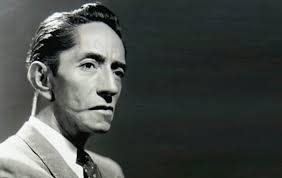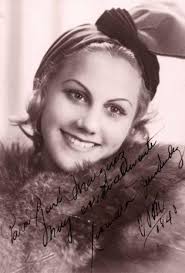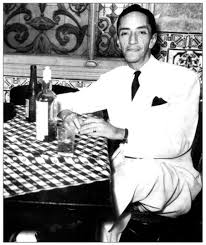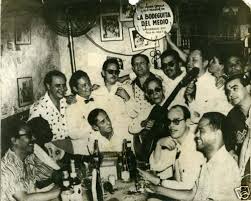 AGUSTIN LARA, “EL FLACO DE ORO”, AND HIS PRESENCE IN CUBA. VIDEOS.
AGUSTIN LARA, “EL FLACO DE ORO”, AND HIS PRESENCE IN CUBA. VIDEOS.
Ángel Agustín María Carlos Fausto Mariano Alfonso del Sagrado Corazón de Jesús Lara y Aguirre del Pino (Spanish pronunciation: [aɣusˈtin ˈlaɾa] was born in Tlacotalpan, Veracruz, México on October 30, 1900, known as Agustín Lara, is recognized as one of the most popular songwriters of his era. His work was widely appreciated not only in Mexico but also in Central and South America, Cuba, and Spain. After his death, he has also been recognized in the United States, Italy, and Japan.
Notable performers of his work include Pedro Vargas who was a friend, Juan Arvizu, Nestor Mesta Chayres, Pedro Infante, Javier Solis, Julio Iglesias, Manuel Mijares, Vicente Fernandez, Luis Miguel, Perez Prado, Chavela Vargas, and Natalia Lafourcade among others.
Lara’s first musical composition was Marucha, written in honor of one of his first loves. In 1927 he already was working in cabarets. It was around this time that he was involved in an argument with a showgirl named Estrella, who slashed him in the face with a broken bottle, leaving a distinct scar (a Glasgow smile) on his cheek. He subsequently moved to Puebla but returned to Mexico City in 1928. That same year he started working for the tenor Juan Arvizu as composer and accompanist. In September 1930, Lara began a successful radio career. At the same time, he acted and composed songs for such films as Santa.
AGUSTIN LARA IN CUBA.
Lara’s first tour, to Cuba in 1933, was a failure because of political turmoil on the island, he traveled at that time in the company of Pedro Vargas and Ana María Fernández. He returned in May 1939. He then made a profession of love for Cuba. She then declared: «I was returning from France … Havana opened its arms to me … and I was not ungrateful, there are that Guajiro Dream and those Coplas that were born in the immense meadow of Yumurí …».
https://youtu.be/D-E6_QmJpIw
(Press ^ Here)
Agustin Lara in Havana.
He is in Cuba again in 1952. At La Bodeguita del Medio she meets Sindo Garay and at the Montmartre cabaret she plays the piano and leads a violin orchestra. Performs at the Aires Libres of the Saratoga hotel. The scholar Radamés Giro affirms: “La Cumbancha – a tribute to Cuban percussion recorded by the Trío Matamoros, Antonio Machín and the Caney quartet – accounts for his interest in Cuban music, Noche criolla and the danzonete Pobre de me.”
It was during his visit in 1939 that he was struck by a girl who had revealed herself as a Rising Star in the Supreme Court of Art, of the CMQ Circuit, and who at that time did a bit of everything on the station itself: she did the voiceover, sings and He recites at the Monte y Cárdenas station. Her name is Xiomara Fernández; She is 21 years old and is as beautiful as she is shy. Gaspar Pumarejo, who would be the pioneer of TV in Cuba, presents them. No more than a few words have changed when Lara expresses her desire to write a song for her to premiere. Xiomara does not know what to answer, she is speechless. She feels tiny in front of a composer of the stature in front of her, but in the end, with many doubts, she agrees. Lara writes for her When You Look at Me, which Xiomara opens at the Gran Teatro de La Habana, which today bears the name of Alicia Alonso, accompanied on piano by the composer himself. He would later sing it in theaters in Matanzas and Pinar del Río.
«All the glory was mine / when you looked at me / all the glory was mine / when you looked at me / the day was without light/everything was without light / and my life began / when you looked at me …» Xiomara Fernández She would remember many years later that she was always fascinated by Agustín; it was very fine and delicate, she said. He sent a bouquet of flowers to the CMQ every day. She feared that such kindness would attract attention and arouse suspicion among her companions and she let him know. He then began to send her a single flower each day with a card that read: “Thinking of you.”
They met several times in one of the bars of the Sevilla hotel. Lara spoke of taking her to Mexico on work plans and specified that she could go in the company of a relative. Xiomara was not interested in the trip. Lara threw herself deep then and proposed to her. She said no.
Xiomara continued an upward career and did not delay in initiating a courtship with José Antonio Alonso, the disputed conductor of the Supreme Court, the man of a thousand brides, as the press of the time called him. The wedding was quite an event. They got married on the 1st. December 1940, at the Gran Teatro de La Habana, with the room full of radio listeners and people from the show business. Hundreds of admirers waited outside to see and acclaim the couple, including a pilot who landed his plane on the Paseo del Prado, in front of the Theater, to release doves and deliver a bouquet of flowers to the bride.
FROM CUBA TO LARA
The music of Agustín Lara remains in the repertoire of Cuban singers of all times, inside and outside the island.
The album ‘Solamente Una Vez’ from Cuba to Lara gathers the interpretations of great voices that sing it in the Cuban style. Pablo Milanés performs ‘Noche de Ronda’, and Omara Portuondo, ‘Solamente Una Vez’, while the Aragón Orchestra performs ‘Lamento jorocho’, and Francisco Céspedes vocalizes ‘Gift de Viaje’, at the express request of one of the composer’s ex-wives. Also on the plate are Van Van, Miriam Ramos, Kelvis Ochoa, Carlos Varela, Santiago Feliú, and David Torrens, among others. “Lara has been part of their lives, some grew up with him and all have adopted him as if he were Cuban,” said the Mexican producer of this album.
At the time the performances were very celebrated, which, separately, were made by ‘Arráncame la Vida’, Orlando Contreras, and Abelardo Barroso, who sang better as he got older. Memorable are those of ‘Pecado’, by Blanca Rosa Gil, and the one made by Barbarito Diez of ‘Palmeras’. They like ‘El organillero’, by Aragon, ‘Rival’, by the orchestra América and Amor de Mis Amores, by Elena Burke. The interpretation that Roberto Sánchez and the Gloria Matancera orchestra made of ‘Santa’, the melody that Lara preferred among all the ones he composed, remains alive in the memory.
Agustín Lara Aguirre y Pino, the “Flaco de Oro”, has his monument on Avenida del Puerto, on the shore of Havana’s bay. A bronze statue, the work of the Yucatecan sculptor Humberto Peraza, which evokes the presence of the composer among us. The image highlights the extreme thinness of the artist who wears a tie and jacket. His left-hand rests on the right arm while the right hand is raised to face level to hint at the presence of the cigarette that will be brought to the mouth. And it is that the author of the operetta ‘The Golden Bird’ and so much music for the cinema, an incessant smoker in life, smokes now in eternity.
 AGUSTIN LARA, “EL FLACO DE ORO”, Y SU PRESENCIA EN CUBA. VIDEOS.
AGUSTIN LARA, “EL FLACO DE ORO”, Y SU PRESENCIA EN CUBA. VIDEOS.
Ángel Agustín María Carlos Fausto Mariano Alfonso del Sagrado Corazón de Jesús Lara y Aguirre del Pino nació en Tlacotalpan, Veracruz, México el 30 de octubre de 1900, conocido como Agustín Lara, es reconocido como uno de los compositores más populares de su época, su trabajo fue muy apreciado no solo en México sino también en Centro y Sudamérica, Cuba y España, tras su muerte ha sido reconocido también en Estados Unidos, Italia y Japón.
Entre los artistas destacados de su trabajo se encuentran Pedro Vargas, quien era amigo, Juan Arvizu, Nestor Mesta Chayres, Pedro Infante, Javier Solís, Julio Iglesias, Manuel Mijares, Vicente Fernández, Luis Miguel, Pérez Prado, Chavela Vargas y Natalia Lafourcade, entre otros.
La primera composición musical de Lara fue Marucha, escrita en honor a uno de sus primeros amores. En 1927 ya trabajaba en cabarets. Fue por esta época cuando se vio envuelto en una discusión con una corista llamada Estrella, quien lo cortó en la cara con una botella rota, dejando una cicatriz distintiva (una sonrisa de Glasgow) en su mejilla. Posteriormente se traslada a Puebla pero regresa a la Ciudad de México en 1928. Ese mismo año comienza a trabajar para el tenor Juan Arvizu como compositor y acompañante. En septiembre de 1930, Lara comenzó una exitosa carrera en la radio. Al mismo tiempo, actuó y compuso canciones para películas como Santa.
AGUSTIN LARA EN CUBA.
La primera gira de Lara, a Cuba en 1933, fue un fracaso por la agitación política en la isla, viajó en ese momento en compañía de Pedro Vargas y Ana María Fernández. Regresó en mayo de 1939. Luego hizo una profesión de amor por Cuba. Luego declaró: «Regresaba de Francia … La Habana me abrió los brazos … y no fui ingrata, están ese Guajiro Sueño y esas Coplas que nacieron en la inmensa pradera de Yumurí …».
Vuelve a Cuba en 1952. En La Bodeguita del Medio conoce a Sindo Garay y en el cabaret de Montmartre toca el piano y dirige una orquesta de violines. Actúa en los Aires Libres del hotel Saratoga. El erudito Radamés Giro afirma: “La Cumbancha -un homenaje a la percusión cubana grabado por el Trío Matamoros, Antonio Machín y el cuarteto Caney- da cuenta de su interés por la música cubana, Noche criolla y el danzonete Pobre de me”.
https://youtu.be/t7RLmXe3oc8
(Presione ^ Aqui)
Agustin Lara canta Maria Bonita.
Fue durante su visita en 1939 que le llamó la atención una chica que se había revelado como una Estrella en Ascenso en la Corte Suprema de Arte, del Circuito CMQ, y que en ese momento hacía un poco de todo en la propia emisora: ella hizo la voz en off, canta y recita en la emisora Monte y Cárdenas. Su nombre es Xiomara Fernández; Tiene 21 años y es tan guapa como tímida. Los presenta Gaspar Pumarejo, que sería el pionero de la televisión en Cuba. No han cambiado más que unas pocas palabras cuando Lara expresa su deseo de escribir una canción para su estreno. Xiomara no sabe qué responder, se queda sin palabras. Se siente diminuta frente a un compositor de la talla que tiene frente a ella, pero al final, con muchas dudas, accede. Lara escribe para ella When You Look at Me, que Xiomara abre en el Gran Teatro de La Habana, que hoy lleva el nombre de Alicia Alonso, acompañada al piano por el propio compositor. Posteriormente lo cantaría en teatros de Matanzas y Pinar del Río.
«Toda la gloria era mía / cuando me mirabas / toda la gloria era mía / cuando me mirabas / el día estaba sin luz / todo estaba sin luz / y empezó mi vida / cuando me miraste …» Xiomara Fernández Muchos años después recordaría que Agustín siempre la fascinó; era muy fino y delicado, dijo. Envió un ramo de flores a la CMQ todos los días. Temía que tanta amabilidad llamara la atención y despertara sospechas entre sus compañeros y se lo hizo saber. Luego comenzó a enviarle una sola flor cada día con una tarjeta que decía: “Pensando en ti”.
Se encontraron varias veces en uno de los bares del hotel Sevilla. Lara habló de llevarla a México en planes de trabajo y especificó que podría ir en compañía de un familiar. Xiomara no estaba interesado en el viaje. Lara se entregó profundamente entonces y le propuso matrimonio. Ella dijo que no.
Xiomara continuó una carrera ascendente y no tardó en iniciar un noviazgo con José Antonio Alonso, el disputado director de la Corte Suprema, el hombre de las mil novias, como lo llamaba la prensa de la época. La boda fue todo un acontecimiento. Se casaron el día 1. Diciembre de 1940, en el Gran Teatro de La Habana, con la sala llena de radioescuchas y gente del mundo del espectáculo. Cientos de admiradores esperaban afuera para ver y aplaudir a la pareja, incluido un piloto que aterrizó su avión en el Paseo del Prado, frente al Teatro, para soltar palomas y entregar un ramo de flores a la novia.
DE CUBA A LARA
La música de Agustín Lara permanece en el repertorio de los cantantes cubanos de todos los tiempos, dentro y fuera de la isla.
El disco ‘Solamente Una Vez’ de Cuba a Lara recoge las interpretaciones de grandes voces que lo cantan al estilo cubano. Pablo Milanés interpreta ‘Noche de Ronda’, y Omara Portuondo, ‘Solamente Una Vez’, mientras que la Orquesta de Aragón interpreta ‘Lamento jorocho’, y Francisco Céspedes vocaliza ‘Gift de Viaje’, a petición expresa de uno de los ex- esposas. También en el plato están Van Van, Miriam Ramos, Kelvis Ochoa, Carlos Varela, Santiago Feliú y David Torrens, entre otros. “Lara ha sido parte de sus vidas, algunos crecieron con él y todos lo han adoptado como si fuera cubano”, dijo el productor mexicano de este disco.
En su momento fueron muy celebradas las actuaciones, que, por separado, corrieron a cargo de ‘Arráncame la Vida’, Orlando Contreras y Abelardo Barroso, que a medida que envejecía cantaba mejor. Memorables son los de ‘Pecado’, de Blanca Rosa Gil, y el de Barbarito Diez de ‘Palmeras’. Les gusta ‘El organillero’, de Aragón, ‘Rival’, de la orquesta América y Amor de Mis Amores, de Elena Burke. La interpretación que Roberto Sánchez y la orquesta Gloria Matancera hicieron de ‘Santa’, la melodía que Lara prefirió entre todas las que compuso, permanece viva en la memoria.
Agustín Lara Aguirre y Pino, el “Flaco de oro”, tiene su monumento en la Avenida del Puerto, a orillas de la bahía de La Habana. Una estatua de bronce, obra del escultor yucateco Humberto Peraza, que evoca la presencia del compositor entre nosotros. La imagen resalta la extrema delgadez del artista que viste corbata y saco. Su mano izquierda descansa sobre el brazo derecho mientras que la mano derecha se levanta al nivel de la cara para insinuar la presencia del cigarrillo que se llevará a la boca. Y es que el autor de la opereta ‘El pájaro dorado’ y tanta música para el cine, fumador incesante en vida, fuma ahora en la eternidad.
Agencies/ Wiki/ Ciro Bianchi/ Extractos/ Excerpts/ Internet Photos/ YouTube/ Arnoldo Varona/ www.TheCubanHistory.com
THE CUBAN HISTORY, HOLLYWOOD.















